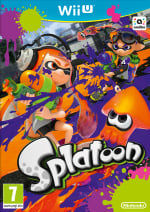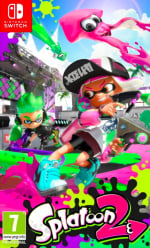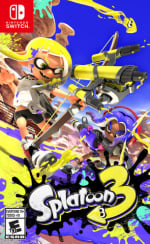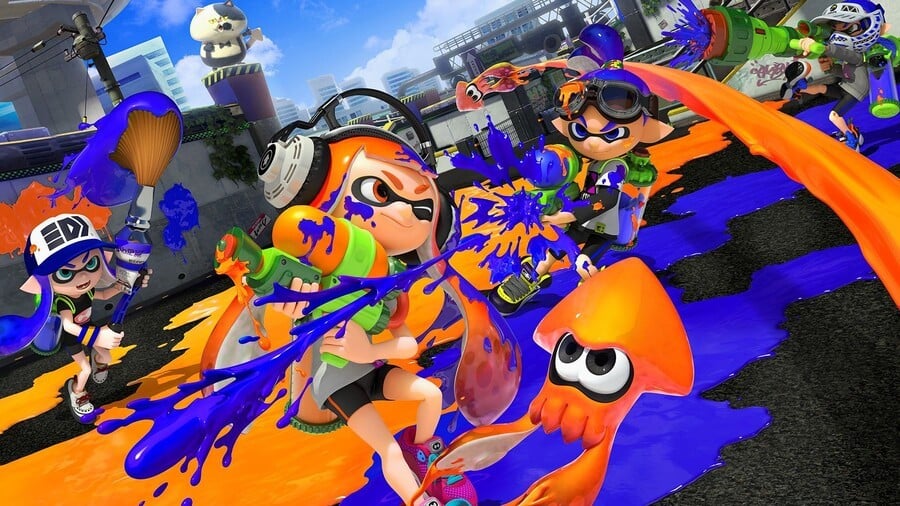
Soapbox features enable our individual writers and contributors to voice their opinions on hot topics and random stuff they've been chewing over. Today, as its online days draw to a close, Nile bids farewell to Splatoon on Wii U, a shining proof of concept...
On 8th April 2024, Nintendo will be officially discontinuing online play for Wii U and 3DS software. Once the servers go dark, turf wars and ranked battles in the original Splatoon will be a thing of the past. “Who actually still plays the Wii U?” some will inevitably ask. True, but spare a thought for the game that started what is now a core Nintendo franchise.
Splatoon's sequels have been iterative, with the second and third entries on Switch not so much reinventing the wheel as finessing gameplay mechanics and tacking on new modes galore, with the Splatoon 3: Side Order DLC adding a new roguelite campaign to a game already bursting at the seams with content and different ways to play.
Now that Splatoon’s squid kids have taken pride of place beside Mario and Link, it's worth appreciating what the original entry brought to the table at a time when Nintendo was on the ropes with its biggest mainline hardware flop to date. Though Splatoon’s colourful chaos couldn’t save the Wii U, it represented a huge gamble that has paid off in spades.
Moreover, as the Splatoon franchise inevitably moves beyond the current iteration of the Nintendo Switch, the first entry is bound to be remembered as something, well, 'exotic' and forever out of reach to those who missed out on the few remaining maps, weapons, 8-bit minigames, single-player and co-op modes that remain exclusive to the series debut.
For the record, Splatoon on Wii U sold around 4.95 million copies to an install base of 13.56 million, or roughly a third of users, making it the sixth highest-selling game on the console. The fact that Splatoon’s sequels have vastly outperformed it in cumulative sales is a testament to how well the maiden entry and its wholly original vision holds up as a proof of concept.
Splatback

Rewind to Nintendo in 2015. While the release of Super Smash Bros. for Wii U a year earlier had put some wind in the Wii U’s sails, the prospect of a new IP like Splatoon was both alluring and fraught with risk. This was an online third-person shooter, a genre Nintendo had hitherto not put its mark on, and one with wacky motion controls and mechanics at that.
But the gameplay loop was genius and enduring: shoot to move, move to shoot, and ink more turf than the other guys. Beyond that, the original Splatoon introduced players to a vibrant, lore-filled world with a youthful punk edge and a 'be yourself' ethos in the form of character customization through fashion accessorizing and a Miiverse bullhorn.
There was nothing else quite like it at the time, and veteran players still praise the original’s lop-sided sense of balance, with specials like the Kraken and Inkzooka being remembered as more overpowered than in the sequels. Some argue that the Quick Respawn feature is less 'nerfed' in the first game, resulting in faster-paced, more raucous matches.
3 vs 1
For those of us used to the Switch entries, firing up an online turf war on the Wii U in 2024 certainly has a different feel. Lobbies still fill up relatively quickly. The controls certainly feel less agile, but the difficulty feels more forgiving. In other words, it feels easier to splat your opponents compared to Splatoon 3 – that is especially true in the single-player campaign.
Splatoon makes excellent use of the Wii U’s GamePad in a way that simply cannot be replicated on current hardware. Having a real-time view of the map makes monitoring the state of play effortless, and performing mid-match squid jumps feels highly intuitive by simply tapping another player’s icon, whereas the sequels take you out of the action by pulling up a menu.
Gyroscopic aiming in a shooter was a very novel concept in 2015. Splatoon certainly helped to popularize motion control-based aiming, with many players of the original arguing that it improved accessibility by allowing for micro-adjustments on the fly. Nowadays, playing a shooter on Switch, especially a game like PowerWash Simulator, without gyro-aiming feels downright stiff.
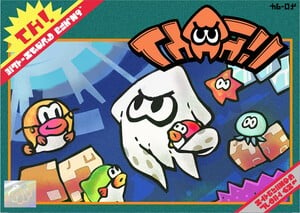
One clear advantage the original had over its direct sequel was the fact that you could play a charming 8-bit minigame, Squid Jump, on the GamePad while in the lobby waiting for matches. Three other 8-bit minigames with nifty Famicom-inspired cover art are also unlockable through amiibo challenges, which could then be accessed at an arcade machine in Inkopolis Plaza.
While the original Splatoon’s main hub world can be visited on Switch as part of Wave 1 of the Splatoon 3: Expansion Pass, the arcade machine is sadly no longer there. It feels like a glaring omission that should be patched in. Having access to those already too-inaccessible, amiibo-paywalled 8-bit odes would add heft to an initial wave of DLC that many felt to be too thin.
Adieu, Dojo

The Battle Dojo, Splatoon’s local co-op mode, will more understandably be lost to time. It allowed for two players – one on the GamePad, the other on the TV – to compete in a balloon splatting contest. Splatoon’s official Tumblr account at the time recommended that players tie a Wii Remote to a Wii U Pro Controller to support motion aiming for the second player.
Fun fact: a depiction of this ludicrous 'chimera' controller can be seen on a Sunken Scroll, collectible goodies found in the story campaign that unlock titbits of Splatoon’s wild lore, technically making it canon. Another scroll uses the word 'squidcore' to refer to Splatoon’s incredible in-game music, which may be the most apt term available to describe it.
A good day to dye?

The key question is, are you really missing out if you never get to play the original Splatoon? While the answer is 'no' – Splatoon 3 delivers by far the definitive experience, with the original’s hub world and many of its maps, apart from Urchin Underpass and Saltspray Rig, accessible – I’m personally thankful to have had a taste of the original as a very late adopter of the Wii U.
Once the plug is pulled on the servers, the single-player campaign will still be accessible. It is certainly still fun and holds up well with some memorable boss encounters, but on the whole feels less challenging and more abbreviated than the sprawling solo modes on subsequent games, particularly the celebrated Splatoon 2: Octo Expansion DLC.
The point is, Splatoon 2 and 3 were built on the foundation of brilliant movement mechanics and an artfully realized, effortlessly cool in-game universe established by the original. For its vision, it is truly one of the Wii U’s best. For those who still have the ill-fated console and a copy of the game, it's certainly worth jumping in again for a few online matches while you can.
